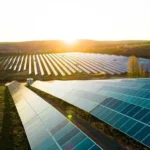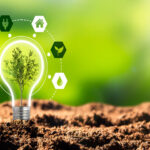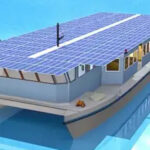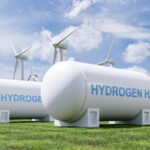7 Steps of a Water Treatment Plant Explained Clearly

Introduction
Water is one of the most essential elements of life, yet access to clean, safe drinking water remains a challenge in many regions. Water treatment is the process of improving water quality to make it suitable for specific end-uses, such as drinking, industrial water supply, irrigation, or returning it safely to the environment. A water filtration plant plays a vital role in this system, applying scientific and mechanical methods to purify raw water sources.
Whether sourced from rivers, lakes, or underground reservoirs, water must go through a systematic purification process to eliminate harmful contaminants. Typically, a water treatment process involves 7 key stages. These steps ensure that the water is not only free from dirt and pathogens but also safe in terms of chemical composition, such as proper pH adjustment. Some modern facilities even integrate water recycling technologies, extending water usability and minimizing waste.
The 7 Steps of a Water Treatment Plant
1. Coagulation
Coagulation is the first essential step in the water treatment process. During this stage, chemicals known as coagulants are added to raw water. These coagulants carry a positive charge that neutralizes the negative charge of particles like dirt, clay, and organic material. Once the charges are neutralized, these particles begin to stick together, forming larger clumps known as “flocs.”
The efficiency of coagulation depends on the type of water being treated and its chemical composition, including pH adjustment if necessary. In many water filtration plants, this step is crucial for targeting the initial bulk of suspended solids. Without coagulation, the rest of the water purification steps would be significantly less effective, and the final water quality would suffer.
2. Flocculation
Following coagulation, the flocculation stage helps the small flocs formed earlier to combine into larger, more visible aggregates. This is achieved by gently mixing the water, allowing flocs to grow in size and weight. Polymers may be added to further encourage the bonding process.
This step typically takes place in a specially designed flocculation basin, where mixing speeds are controlled to prevent the flocs from breaking apart. Effective flocculation enhances the performance of the next step, sedimentation, and helps ensure better filtration efficiency later.
By improving floc structure, this step reduces the need for more complex treatment techniques and improves water recycling rates in some advanced plants.
3. Sedimentation
Once large flocs are formed, the water is moved to the sedimentation tanks. These tanks are designed to allow flocs to settle at the bottom due to gravity, separating them from the clearer water above.
In a typical water filtration plant, sedimentation can remove up to 90% of suspended solids. The settled solids are then collected and disposed of or treated further depending on environmental regulations and plant design. Sedimentation is also the stage where plant operators may fine-tune parameters such as flow rate and pH adjustment to optimize performance.
This process not only improves water clarity but also reduces the load on downstream treatment units, making the overall water purification process more cost-effective and efficient.
4. Filtration
With most solid particles removed through sedimentation, the water then moves to the filtration stage. In this step, water passes through layers of media—typically sand, gravel, and sometimes charcoal—to remove remaining suspended particles, bacteria, and some chemical impurities.
Filtration is where a water filtration plant earns its name. It is essential for producing high-quality drinking water that meets safety standards. Advanced filtration systems may include membrane filters or pressure-driven units, which further aid in water recycling by enabling reuse in non-potable applications.
Filtration is not only vital for public health but also supports industrial processes that require ultra-pure water, such as in pharmaceuticals or electronics manufacturing.
5. Disinfection
Once physical contaminants are removed, the water is ready for disinfection, which targets microorganisms such as bacteria, viruses, and protozoa. This is typically achieved using chlorine, ozone, or ultraviolet (UV) light.
Disinfection ensures that the treated water remains safe as it travels through pipelines to homes and businesses. In many cases, a residual disinfectant is added to keep the water clean throughout distribution. This step is critical in any water treatment process, especially in areas prone to waterborne diseases.
Some modern water filtration plants also combine disinfection with pH adjustment to maintain chemical stability and prevent corrosion in pipes.
6. Storage
After disinfection, water is stored in tanks or reservoirs before distribution. Storage allows for better pressure management and ensures a steady supply even during peak demand times or emergency situations.
In this stage, water recycling plays a supporting role. Treated water not immediately needed for consumption may be diverted for agricultural or industrial use, helping reduce water waste. The quality of stored water is continuously monitored for microbial activity and chemical balance, including pH levels.
Proper storage is key to maintaining water quality and ensuring that the entire water purification chain remains intact until the final point of use.
7. Distribution
The final step in a water treatment process is distribution, where clean water is delivered to homes, schools, factories, and public institutions through an intricate network of pipes. This infrastructure includes pumping stations, pressure regulators, and monitoring systems to ensure consistent water flow and safety.
Maintaining the cleanliness and safety of water during distribution requires regular testing and infrastructure maintenance. It’s also the stage where awareness of water recycling and conservation efforts must be promoted to reduce overall demand and prolong the sustainability of clean water systems.
A reliable distribution system reflects the success of the entire water filtration plant and determines the accessibility of purified water to the community.
Why These Steps Matter
The 7 steps of the water treatment process are more than just technical procedures—they have profound implications for health, the environment, and the economy. Without these carefully engineered steps, millions would be at risk of waterborne diseases such as cholera, typhoid, and dysentery.
Effective water purification reduces the healthcare burden on communities and enhances overall quality of life. Clean water supports agricultural productivity, industrial efficiency, and ecosystem preservation. In urban areas, pH adjustment helps prevent pipe corrosion and infrastructure damage, saving cities millions in repair costs.
Furthermore, advanced technologies in water recycling are helping cities reuse treated water for landscape irrigation, cooling in power plants, and even potable reuse in water-scarce regions. This not only conserves natural water sources but also lowers the environmental impact of waste discharge.
When water filtration plants function efficiently, they empower communities to thrive. However, untreated or poorly treated water can lead to devastating consequences—from disease outbreaks to food shortages and economic loss. Every step in the treatment chain, from coagulation to distribution, plays a role in safeguarding public health and environmental balance.
Conclusion
The journey of water from its natural source to your faucet involves a highly controlled and vital water treatment process. Each of the 7 steps—coagulation, flocculation, sedimentation, filtration, disinfection, storage, and distribution—works in harmony to deliver safe, clean water.
Modern water filtration plants not only ensure purity but also incorporate sustainable solutions like water recycling and pH adjustment, enabling smarter resource management. These processes are not just scientific necessities—they are lifelines for health, economic stability, and environmental conservation.
As water becomes an increasingly precious resource, it’s essential to value the systems that purify and deliver it. By supporting water purification efforts and promoting conservation, we can all play a part in ensuring safe water for generations to come.
FAQs
1. Is all treated water safe to drink?
Treated water from a certified water filtration plant, following all 7 steps of the water treatment process, is generally safe for drinking. Regular testing and compliance with water quality standards ensure its safety.
2. How does sedimentation help in water purification?
Sedimentation allows heavy particles and flocs to settle at the bottom of a tank, separating them from the clearer water above. It’s a key step in reducing the load on filtration units and improving overall water purification efficiency.
3. Can a water treatment plant help with water shortages?
Yes, especially when integrated with water recycling systems. Treated wastewater can be reused, reducing the demand on natural freshwater sources and helping communities manage water scarcity.
4. Why is disinfection necessary even after filtration?
Disinfection kills any remaining microorganisms that filtration may not remove. It is essential for ensuring that water is microbiologically safe, especially during distribution when water travels through long pipelines.
5. What happens if pH levels are not adjusted in water treatment?
Without pH adjustment, water can become corrosive or form mineral deposits in pipes. It may also reduce the effectiveness of disinfectants like chlorine, compromising the safety of the treated water.











